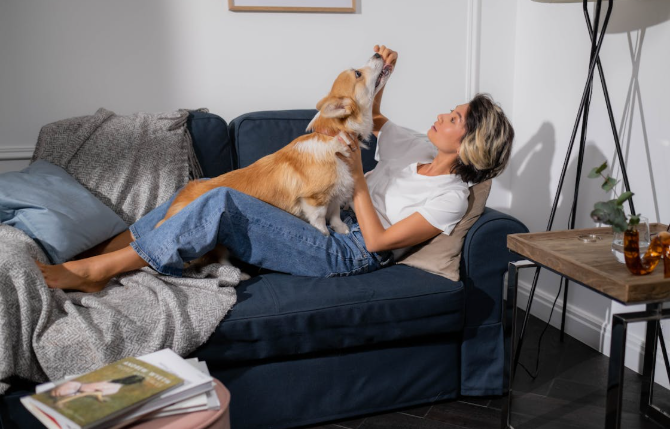Best Primer for Every Surface: How to Choose the Right One for Your Project
- Matej Svoboda
- Mar 12
- 4 min read
A good paint job starts with a high-quality primer. Whether you're painting drywall, wood, metal, concrete, or previously painted surfaces, choosing the right primer is essential for proper adhesion, durability, and a smooth finish.
Using the wrong primer can lead to peeling, poor coverage, or an uneven finish, while the right primer will ensure that your paint lasts longer and looks flawless.
In this blog, we’ll cover the best primers for different surfaces, their types, and how to choose the right one for your next project.
What is a Primer?
Primer is a preparatory coating applied before painting. Different surfaces require different primers, depending on material, condition, and environment.
Priming helps to:
Improve paint adhesion for a long-lasting finish.
Seal porous surfaces to prevent paint from soaking in.
Block stains, odors, and discoloration.
Enhance color vibrancy by providing a neutral base.

Different Types of Primers and Their Uses
There are three main types of primers:
1. Oil-Based Primer
Pros
Ideal for wood, metal, and previously painted surfaces.
Excellent stain-blocking properties (best for water, nicotine, or smoke stains.)
Seals porous surfaces well.
Cons
Longer drying time.
Emits strong fumes.
Requires paint thinner for cleanup.
Best for: Cabinets, trim, doors, furniture, and surfaces prone to stains.
2. Water-Based (Latex) Primer
Pros
Dries quickly and has low VOCs - emits fewer fumes.
Easy cleanup with soap and water.
Ideal for drywall, plaster, and masonry.
Cons
Not as effective on heavy stains or glossy surfaces.
Best for: New drywall, interior walls, and projects where quick drying is needed.
3. Shellac-Based Primer
Pros
Best stain-blocking primer - seals water, smoke, and ink stains.
Dries extremely fast - 20-60 minutes.
Works on wood, metal, and even glossy surfaces.
Cons
Strong odor and requires denatured alcohol for cleanup.
Best for: Water-damaged or smoke-stained walls, wood furniture, and spot-priming stubborn stains.
Choosing the Best Primer for Different Surfaces
1. Drywall & Plaster
For Drywall and Plaster, it is best to go for a water-based (latex) primer. It effectively seals the porous surface of new drywall and helps paint adhere evenly. It is quick-drying and low-odor.
Bonus Tip: If there are stains, use a stain-blocking primer like shellac-based or stain-blocking oil-based primer.

2. Wood (Bare, Stained, or Painted)
Oil-based or shellac-based primer would be great for bare, stained, or painted wood alike. These primers prevent wood tannins from bleeding through paint. It helps in sealing knots and imperfections. It also provides excellent adhesion.
Bonus Tip: If painting bare softwood (pine, cedar), use a stain-blocking primer to prevent yellowing.
3. Metal (Steel, Aluminum, Galvanized)
The best primer in this case would be rust-inhibiting or oil-based metal primer. It prevents rust and corrosion and enhances paint adhesion on slick metal surfaces.
Bonus Tip: Use a spray primer for hard-to-reach areas on metal furniture or fixtures.
4. Concrete, Brick, & Masonry
The best primer for painting bricks, concrete, and masonry could be masonry sealer or water-based bonding primer. It prevents excessive paint absorption and helps paint stick to rough, porous surfaces. It also resists peeling and cracking.
Bonus Tip: For outdoor surfaces, use a water-resistant masonry primer for durability.
5. Glossy Surfaces (Tiles, Laminate, Glass, & Plastic)
The best choice would be bonding primers (Shellac or High-Adhesion Water-Based.) It allows paint to stick to slick surfaces and works well on laminate cabinets, tile backsplashes, and plastic furniture.
Bonus Tip: Lightly sand glossy surfaces before priming for extra adhesion.
6. Stain & Odor Blocking
Shellac-based or oil-based stain-blocking primer is the perfect choice in this case as it seals smoke damage, nicotine stains, and pet odors. It even prevents water stains from bleeding through.
Bonus Tip: For severe stains, apply two coats of primer before painting.
7. Exterior Surfaces (Wood, Siding, Masonry)
For exterior surfaces of wood, siding, or masonry - exterior-grade oil-based or acrylic primer would be great. It protects against moisture, mildew, and UV damage, and improves adhesion and extends the life of exterior paint.
Bonus Tip: Use an oil-based primer for weathered wood and a water-based primer for newer surfaces.
How to Apply Primer for Best Results?
Clean the Surface – Remove dust, dirt, and grease before priming.
Sand if Necessary – Lightly sand glossy or rough surfaces for better adhesion.
Stir the Primer – Ensure even consistency before applying.
Use the Right Tools – Brush for edges, roller for large areas, sprayer for smooth finishes.
Apply Thin, Even Coats – 1-2 coats are usually enough.
Let it Dry Completely – Follow the recommended drying time before painting.
Just as it is crucial to choose the right primer for the right surface, hiring the right painters’ team is also crucial to your paint project. The right professional team will not only have the experience to guide you through your project needs, helping you choose the correct techniques and equipment, but will also get your project done efficiently, at the most reasonable prices.
When you hire Adam Painters and Decorators for your paint job, you can rest assured that your project is in good hands. We work with professional painters locally to Dublin, Cork, Limerick, Galway, Waterford and Wexford. If you require help outside of these cities, please send us a request and we can discuss it together. After that our team will take care of everything. Get your free estimate for your project straight away with our online calculator.
Final Thoughts
Choosing the right primer is essential for a flawless and long-lasting paint job. Whether you're painting drywall, wood, metal, or masonry, using the correct primer ensures better adhesion, smoother coverage, and increased durability.



